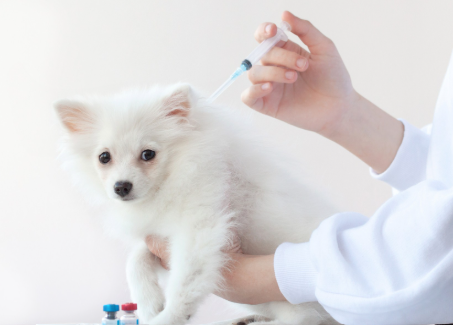Lupus in Dogs – Symptoms and Treatment
Lupus in dogs is a group of autoimmune diseases that affect mainly the skin of the animal, and in severe cases, various internal organs. Autoimmune diseases occur when the body’s own immune system begins to perceive its own cells as foreign and attacks them. The factors that cause this condition are unknown, but hereditary, infectious, radiation, and other causes are possible.

About lupus
Autoimmune skin diseases of dogs are quite rare at a dermatologist’s appointment, their number does not exceed 2-3% of all visits. Of all types of autoimmune lesions of the body, lupus erythematosus in dogs is even rarer, so making this diagnosis is often difficult.
Autoimmune diseases are those diseases for the development of which the body’s immune system “rebels” against its own tissues, trying to destroy them. These diseases are also divided into organ-specific (affecting one specific organ) and systemic (affecting a system or systems of organs at once).
Lupus is a systemic autoimmune disease. It is divided into systemic lupus erythematosus and discoid lupus erythematosus, and subtypes include exfoliative lupus and mucocutaneous zones.

Systemic lupus erythematosus in dogs
This disease is extremely rare in dogs. There is a breed predisposition. Chinese crested dogs , Labrador retrievers , miniature pinschers , Leonbergers , Shih Tzus , and toy poodles are most often affected .
This disease can be chronic or recurrent. Systemic lupus erythematosus in dogs is usually characterized by a slow development of skin lesions, and from the onset of their appearance to a visit to the doctor, it can take from 3 months to 2 years.
Most often, owners notice the appearance of red spots, pimples, ulcers and flaking. They are usually found on the neck, sides, back, chest, head, abdomen, lower limbs. Half of the animals may experience itching or pain. There may also be complaints of lameness, cough , lymphadenomegaly (enlarged lymph nodes). Blood tests may reveal changes in kidney function.
Discoid lupus erythematosus in dogs
This disease is also called a benign form of systemic lupus erythematosus. The following breeds are more susceptible: collies , German shepherds , huskies and crossbreeds of these breeds. The lesions of this disease are usually not spread throughout the body, but are localized near the nose, sometimes in the area of the eyes, ears, lips, and less often the fingers.
Systemic manifestations are not typical for discoid lupus erythematosus; deterioration of the dog’s general condition and blood test results are usually not noted.

Exfoliative lupus
It has been little described in animals. Since 1992, only 25 such cases have been registered. Shorthaired pointer dogs are at risk . The lesions are also distributed over the body, as in systemic lupus, but there is also abundant peeling of the lesions.
Lupus erythematosus of the mucocutaneous zones
Also an extremely rare type of disease. Cases have been registered only in German Shepherd dogs. In this type of disease, lesions were found on the border of the skin-mucous zone – mainly localized near the lips and eyes.
Causes of Lupus Development
The exact reasons for the development of this disease in dogs have not been established. The main mechanism of development lies in the failure of the animal’s own immune system. Why this happens has not yet been clarified.
Scientists suggest the following possible factors in the development of the disease:
- The action of ultraviolet radiation;
- Chronic stress;
- Certain drugs and toxins;
- Endocrine diseases;
- Oncological processes;
- Infectious diseases;
- Chronic inflammation;
- Prolonged hypothermia;
- Genetic predisposition

Symptoms of Lupus
The main symptoms of systemic lupus erythematosus in dogs include ulcers of the skin and mucous membranes. Redness of the skin, baldness, crusts, peeling, scars. At first, the lesions are usually localized to one area, but over time they spread to other parts of the body.
Most often, the muzzle, ears, lower parts of the limbs are affected. Often, an increase in lymph nodes in the affected area can be noted. With generalization of the process, intermittent fever (body temperature is sometimes normal, sometimes slightly elevated), polyarthritis (inflammation of the joints), polymyositis (inflammation of the muscles), renal failure, pneumonia, diseases of the heart membrane and muscle, and even damage to the central and peripheral nervous systems can be detected.
In discoid lupus, lesions are predominantly localized in the facial area. They may include lightening of the nose, erythemaskin near the nose, formation of scales and crusts. Later, erosions and ulcers may appear. From the nose, lesions move to the lips, skin around the eyes, and ears. Occasionally, the lower parts of the paws are also affected. Crusts on the pads of the fingers can be seen extremely rarely.
In exfoliative lupus, there is abundant peeling of the skin, and in lupus of the mucocutaneous zones, the lesions will be localized only at the borders between the skin and mucous membranes (for example, the lip area).

Diagnostics
The first step in diagnosing discoid lupus erythematosus is to perform a thorough physical examination of the animal. The clinical manifestations are usually very characteristic of the disease, and the disease can be suspected based on a simple physical examination.
Next, it is necessary to exclude other possible differential diagnoses., including pyoderma, demodicosis, lichen, pemphigus and others. The diagnosis is confirmed only by histological examination.examination of a skin area. Also informative is a study called immunohistochemistry, but this test is not available in most regions.
If systemic lupus is suspected, general tests such as blood and urine tests will also be needed.
Blood tests usually show anemia., thrombocytopenia, leukopeniaor leukocytosis. Urine analysis shows proteinuria.In the presence of polyarthritis, arthrocentesis is indicated., its results usually reveal purulent inflammation. The final diagnosis will also be made based on the results of histological examination of the affected tissues.
For the diagnosis of exfoliative lupus and mucocutaneous zones, the same methods described above are most likely used, but there is very little information on this issue in the literature.
Treatment of lupus in dogs
Treatment for all types of lupus will be similar. However, treatment for systemic lupus is usually more aggressive due to the multiple organs involved and will depend on the extent of damage to each specific organ.
It is recommended to avoid direct sunlight and use sunscreen on hairless areas of the skin, especially the nose.
Shampoos such as those based on benzoyl peroxide are good for removing crusts.
In the presence of a secondary bacterial infection, appropriate antibiotics are prescribed in dermatological doses for a course of at least 3 weeks.
The main treatments will be drugs with immunosuppressive effects.action. Since lupus is an autoimmune disease, the goal of treatment is to suppress the dog’s immune system in order to interrupt the process of destruction of its own cells. Usually, both topical and systemic drugs are prescribed. The drugs used are tacrolimus, prednisolone, cyclosporine, oclacitinib, azathioprine, chlorambucil, cyclophosphamide, mycophenolate mofetil and leflunomide. Treatment is long-term, often lifelong, in minimal effective doses.
Prevention
Prevention of this disease is difficult, since the exact causes of its occurrence have not been established. It is recommended to regularly visit a veterinarian, undergo an annual medical examination, including an examination, blood tests, and an ultrasound of the abdominal cavity.
Based on these analyses, diseases can be detected at early stages. Reducing stress levels can also prevent illness. The dog requires regular exercise, physical and intellectual exercise, a variety of leisure activities, and proper feeding. Improving environmental conditions, such as keeping your pet outside the city, is also an excellent preventative measure against many diseases, including lupus.
Main
- Lupus in dogs is an autoimmune disease that primarily affects the skin, but in some cases other organs as well.
- In most cases, the disease affects the nose, sometimes the skin around the eyes and lips, and even less often the skin of the extremities. Symptoms of the disease include red spots, itching, peeling, etc.
- There are several forms of lupus: discoid and systemic lupus erythematosus. There are also two subtypes of the disease: exfoliative and lupus of the mucocutaneous zones.
- The main diagnostic method is histological examination.
- Treatment involves the use of immunosuppressive drugs to suppress the body’s own immunity.
- Prevention is difficult due to the lack of exact causes of the disease.






